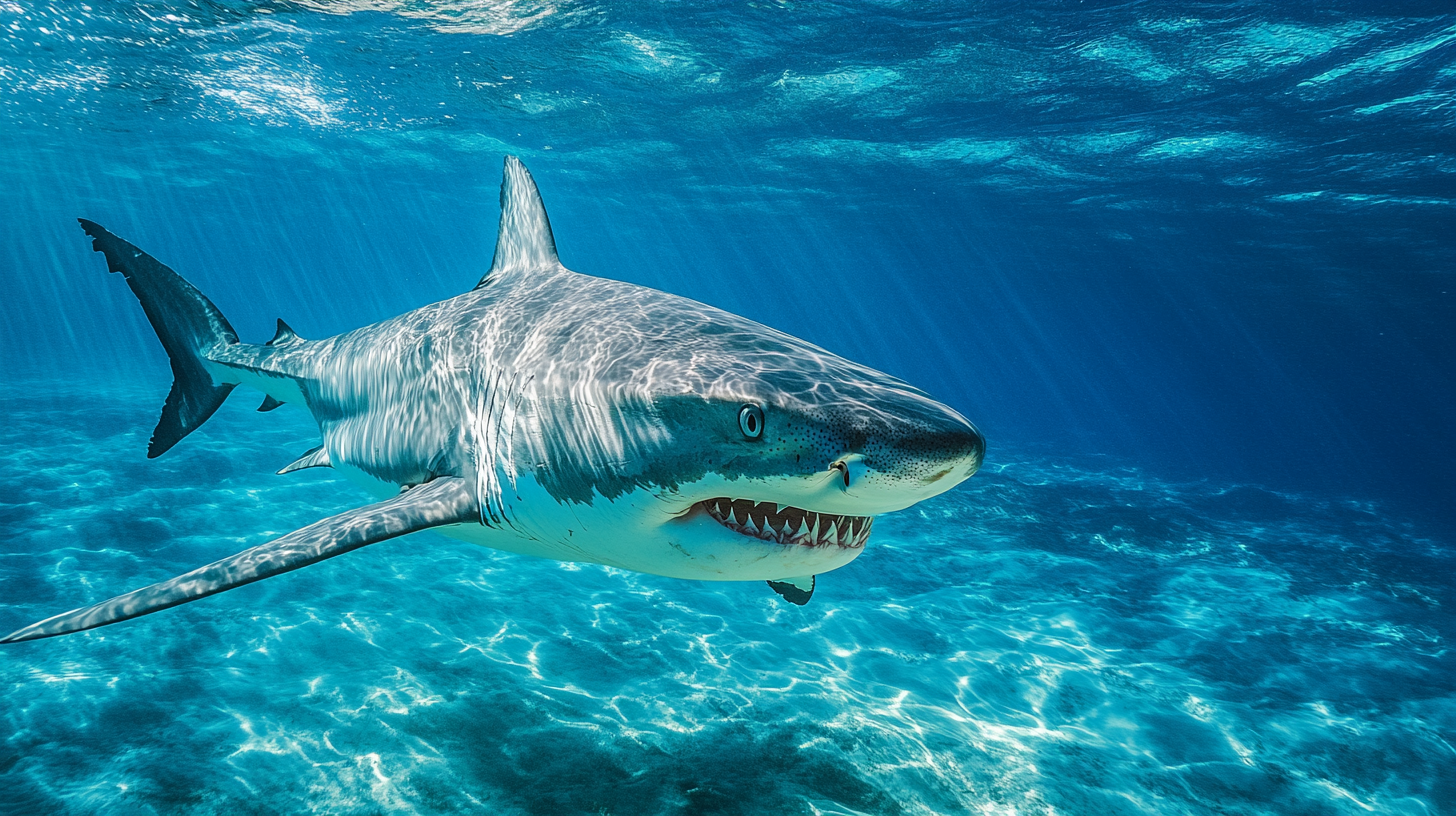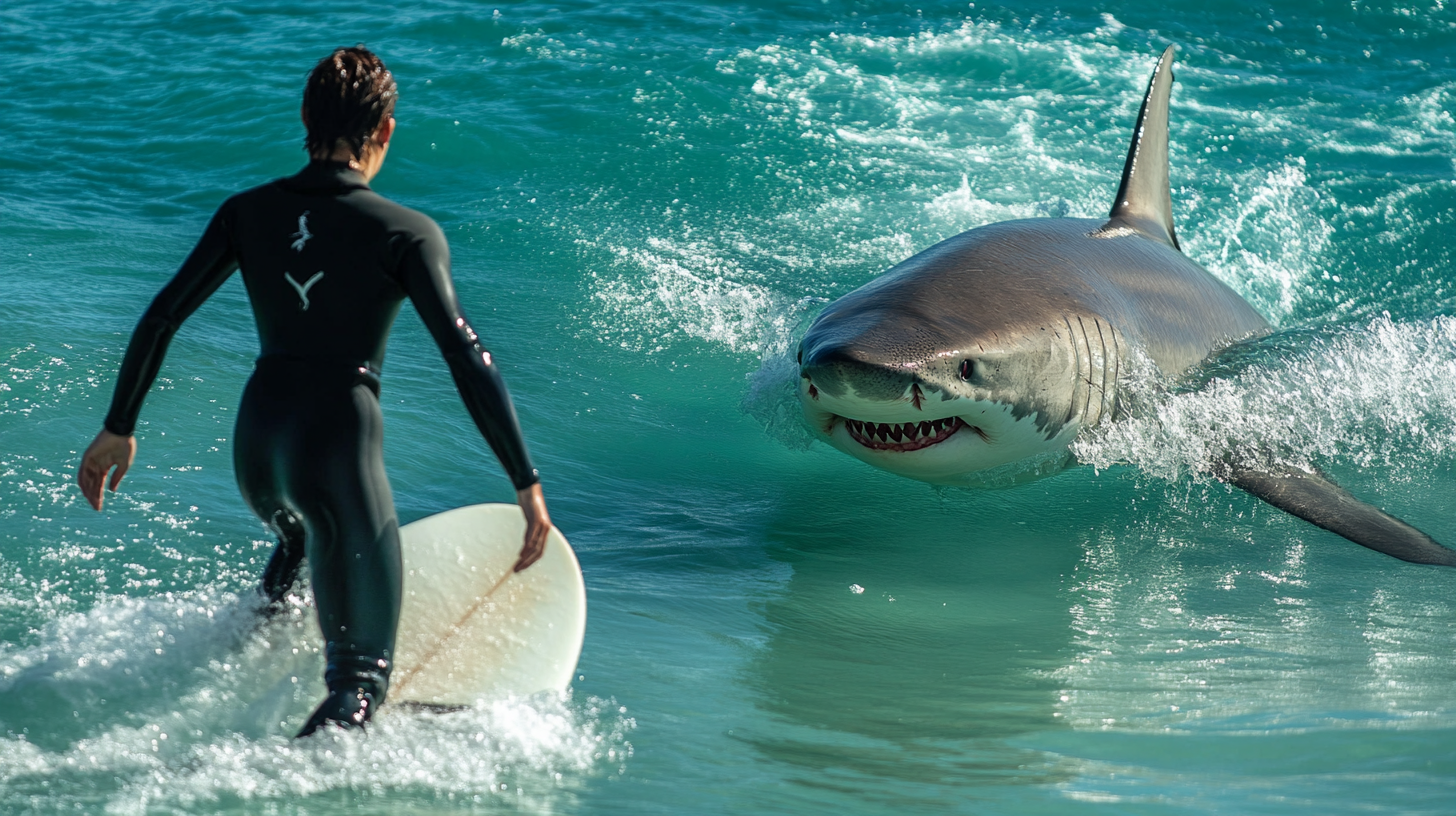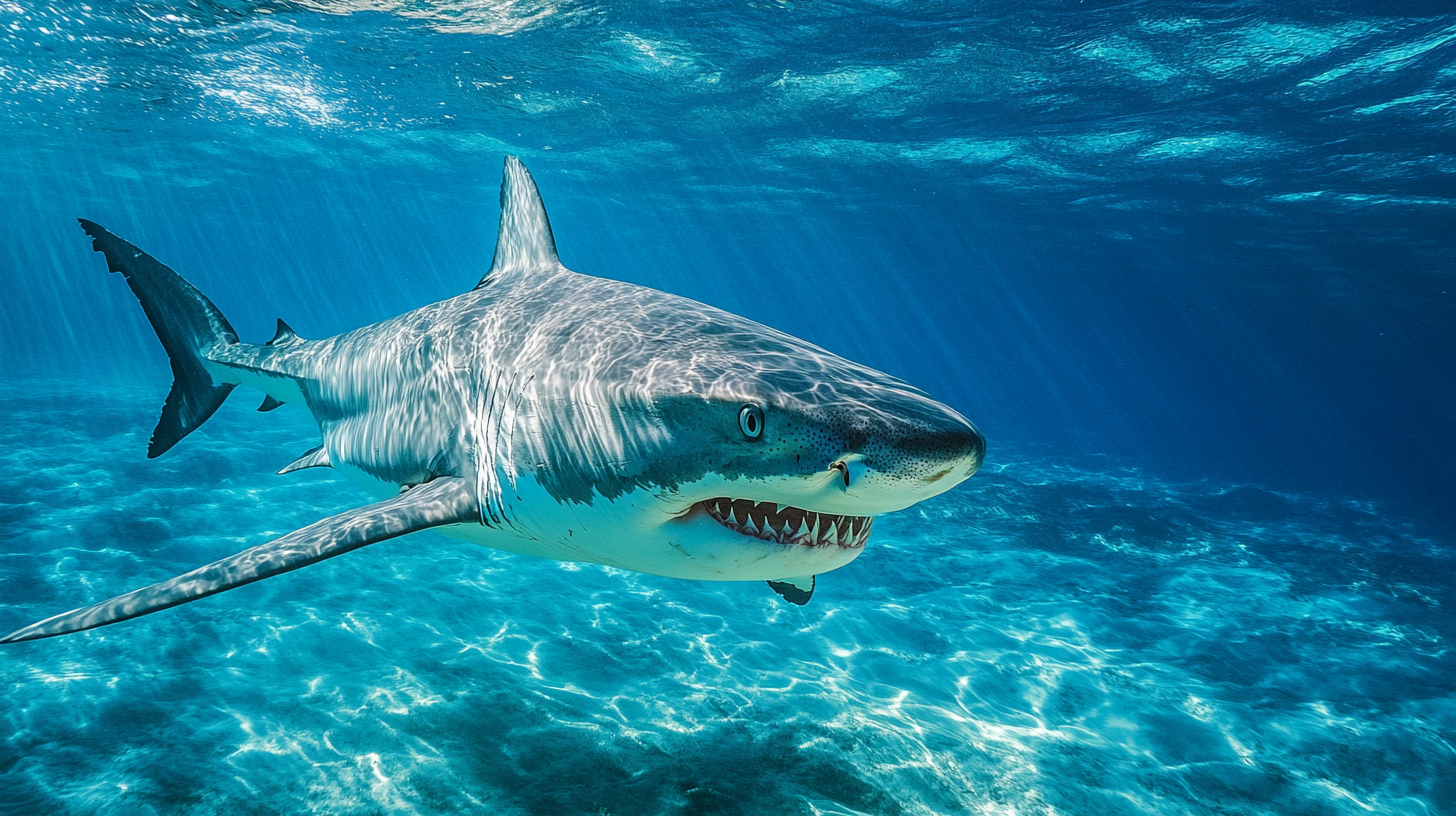

details of the shark attack
Teddy Wittemann was enjoying a typical day of surfing at Floridana Beach in Brevard County, Florida, when the unexpected happened. While riding a wave, he suddenly felt a sharp pain in his arm. A shark had bitten him, catching him off guard in the shallow waters. According to witnesses, the attack occurred in the early afternoon, with the shark striking quickly before disappearing back into the ocean. The species of the shark has not yet been confirmed, but experts believe it could have been a blacktip or spinner shark, both common in the area during this time of year.
Wittemann managed to paddle back to shore despite the injury, where fellow surfers and beachgoers immediately came to his aid. The bite left significant wounds on his arm, with deep lacerations that required urgent medical attention. Those on the scene acted quickly, applying pressure to the wound to control the bleeding while waiting for emergency services to arrive.
Shark attacks in this region are rare but not unheard of, especially during the warmer months when both surfers and sharks are more active in the water. Floridana Beach, known for its consistent waves, attracts surfers from all over, but it also lies within a migratory path for several shark species. While most encounters are harmless, this incident serves as a reminder of the unpredictable nature of the ocean.
medical response and treatment
Emergency responders arrived swiftly at the scene after receiving a 911 call from a bystander. Paramedics assessed Wittemann’s condition and determined that the injuries, while serious, were not life-threatening. His arm had sustained multiple deep lacerations, and there was concern about potential damage to muscles and tendons. After stabilising him on the beach, they transported him to a nearby hospital for further evaluation and treatment.
At the hospital, doctors worked to clean the wounds thoroughly to prevent infection, a common risk with shark bites due to the bacteria present in ocean water. Wittemann underwent surgery to repair the damaged tissue, and doctors were optimistic about his recovery, though they noted that he would need physical therapy to regain full strength and mobility in his arm. The medical team praised the quick actions of the surfers and beachgoers who had helped control the bleeding, stating that their efforts likely prevented the situation from becoming more severe.
Wittemann is expected to remain in the hospital for a few days for observation, and while the road to recovery may be long, his doctors are confident that he will eventually be able to return to the water. In a brief statement, Wittemann expressed gratitude for the support he has received from the local surfing community and the medical staff, saying that he feels fortunate to have survived the encounter.
local beach safety concerns
The recent shark attack has raised concerns among local surfers and beachgoers about the safety of Floridana Beach and other nearby surf spots. While shark attacks are statistically rare, the incident has prompted discussions about whether more precautions should be taken to protect those who frequent the water. Some locals have expressed concerns about the lack of visible warning systems or signage alerting beachgoers to the presence of sharks, especially during peak migration seasons.
Floridana Beach, like many other beaches along Florida’s east coast, is a popular destination for surfers due to its consistent waves and relatively uncrowded conditions. However, it also lies within an area known for seasonal shark activity, particularly during the warmer months when sharks migrate closer to shore in search of food. Experts have pointed out that while the risk of shark encounters increases during these times, the likelihood of a serious attack remains low. Still, the recent incident has reignited calls for better public awareness and education on how to minimise the risk of shark encounters.
Some surfers have suggested the implementation of shark-spotting programs, similar to those used in parts of South Africa and Australia, where trained observers monitor the water for shark activity and alert beachgoers if a potential threat is detected. Others have advocated for the use of drone surveillance or the installation of shark nets, though these measures come with their own set of challenges, including cost and environmental impact.
Local authorities have responded by reminding the public of basic safety guidelines, such as avoiding surfing during dawn and dusk when sharks are most active, staying in groups, and refraining from wearing shiny jewellery or brightly coloured wetsuits that could attract sharks. They have also emphasised the importance of reporting any shark sightings to lifeguards or local officials so that appropriate warnings can be issued.
Despite the heightened concerns, many in the local surfing community remain undeterred. For them, the ocean’s inherent risks are part of the sport, and while they acknowledge the need for caution, they are not willing to give up their passion for surfing. As one local surfer put it, “We know the risks every time we paddle out, but the love for the waves keeps us coming back. It’s about respecting the ocean and being aware of your surroundings.”
Shark attack details
Mate, it was a classic day out at Floridana Beach, Brevard County, Florida. The sun was shining, the waves were pumping, and Teddy Wittemann was out there doing what he does best—riding the swell. But things took a gnarly turn when a shark decided to join the session. Mid-wave, Teddy felt a sharp bite on his arm. Not exactly the kind of high-five you want from the ocean, right?
Turns out, it was a decent-sized shark, though no one’s sure exactly what species. Teddy managed to keep his cool, paddling back to shore with one arm while the other was bleeding like a stuck pig. Lucky for him, some quick-thinking beachgoers were on hand to help out. They got him out of the water and started first aid before things got too hairy.
Shark attacks are rare, but when they happen, they sure make for a story. Teddy’s got one now, and it’s a ripper.
Medical response and recovery
Once Teddy made it to shore, the real work began. Paramedics arrived on the scene faster than a grommet chasing a set wave. They quickly assessed the damage to his arm, which, let’s be honest, wasn’t looking too flash. The bite had left some deep gashes, and there was a fair bit of blood loss. But Teddy, being the tough bloke he is, stayed calm through the whole ordeal.
He was rushed to the nearest hospital, where doctors got to work patching him up. Word is, he’s going to need a bit of time to heal, but the good news is that the injuries aren’t life-threatening. A few stitches, some rest, and he’ll be back in the water before you can say ‘shark bait.’
Recovery’s going to be a bit of a slog, though. His arm’s going to need some serious TLC, and he’ll probably be off the board for a while. But if there’s one thing surfers know, it’s patience. You wait for the right wave, and you wait for your body to heal. Teddy’s already talking about getting back out there, and knowing him, it won’t be long before he’s back chasing barrels.
“It’s just a part of the adventure, mate,” Teddy reportedly said from his hospital bed. “You can’t let a little nibble keep you out of the water.”
Classic Teddy.

